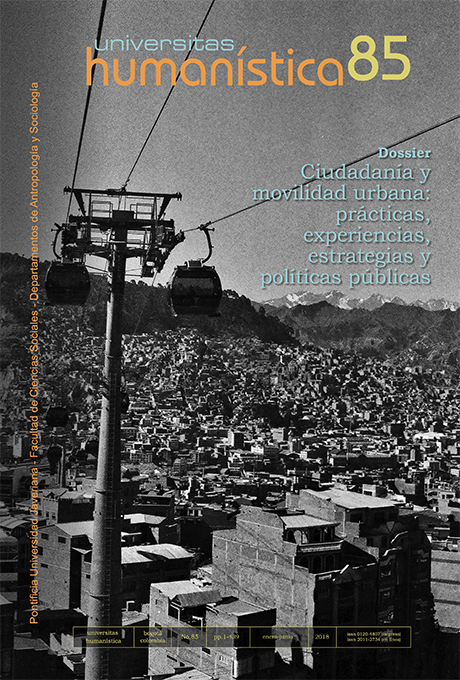Abstract
Mobility is an element that gives form to places, and therefore, an articulator of daily life and habitat for the shaping of neighborhoods and their relationship with the city. Bearing this in mind, it is important to reflect on how life is shaped to arrive at a destination. This document aims to present several strategies, according to gender, age,
or economic situation, to cover short but physically significant sections, and show how these recreate meanings, forms of use, spaces, places, and consequently, the habitat. The daily experience in two hills of Valparaíso will be presented, from the perspective of daily mobility, through a historical analysis and an ethnographic approach. The results show the physical isolation and the subsequent urban exclusion to which the territories are exposed when the transport systems do not respond to the needs of the inhabitants, and how inhabitants themselves overcome these difficulties to ac cess the city.

This journal provides immediate open access to its content on the principle that making research freely available to the public, encourages greater global exchange of knowledge.
The journal Universitas Humanística is registered under a Creative Commons Attribution 4.0 International Public License. Thus, this work may be reproduced, distributed, and publicly shared in digital format, as long as the names of the authors and Pontificia Universidad Javeriana are acknowledged. Others are allowed to quote, adapt, transform, auto-archive, republish, and create based on this material, for any purpose (even commercial ones), provided the authorship is duly acknowledged, a link to the original work is provided, and it is specified if changes have been made. Pontificia Universidad Javeriana does not hold the rights of published works and the authors are solely responsible for the contents of their works; they keep the moral, intellectual, privacy, and publicity rights.
Approving the intervention of the work (review, copy-editing, translation, layout) and the following outreach, are granted through an use license and not through an assignment of rights. This means the journal and Pontificia Universidad Javeriana cannot be held responsible for any ethical malpractice by the authors. As a consequence of the protection granted by the use license, the journal is not required to publish recantations or modify information already published, unless the errata stems from the editorial management process. Publishing contents in this journal does not generate royalties for contributors.


